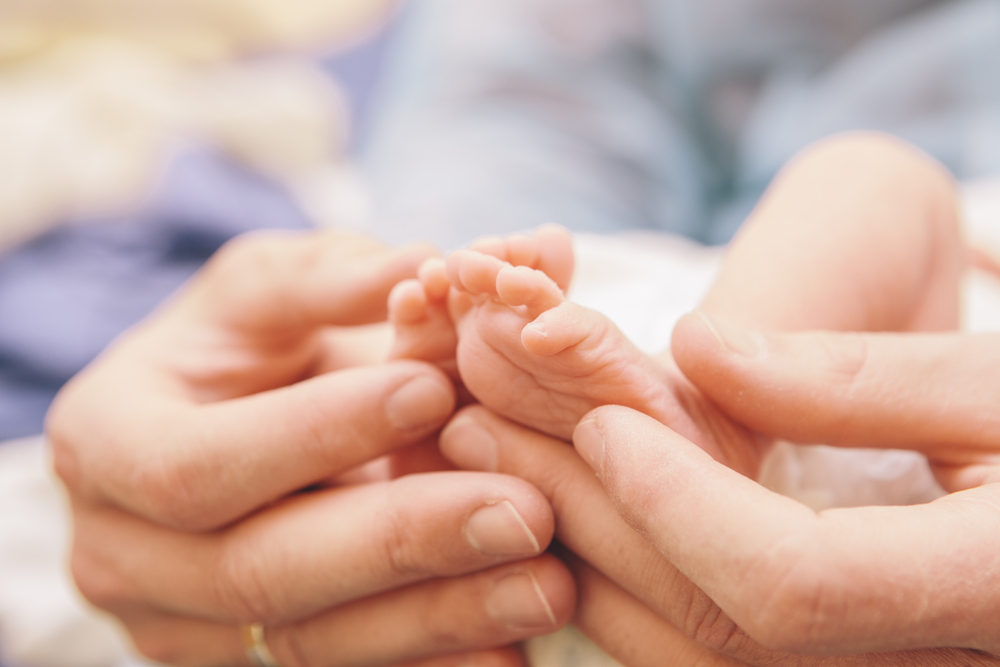
Normal delivery
Also known as Normal Vaginal Delivery, is the most common method of birthing worldwide. It is associated with low morbidity and mortality.
The benefits of Normal Vaginal Delivery are manifold: Benefits for the mother include
- Quicker recovery and shorter hospital stay
- Earlier onset of lactation
- Decreased complications in future pregnancies
Benefits for the Infant include
- Reduced risk of respiratory disorders
- Decreased risk of NICU admissions
- Improved immune function, possibly due to the infant’s exposure to normal vaginal and gut bacteria during vaginal birth Labour is a natural procedure and a unique experience for the mother.
The first stage of labor and birth occurs when the mother begins to feel recurrent, regular contractions. These contractions become stronger, more regular, and more frequent over the time. They cause the cervix to dilate and efface to allow the baby to move into the birth canal.
During early labor, the mother may feel mild and irregular contractions.
As the cervix begins to open more and more, the mother might notice a clear pink or slightly bloody discharge from the vagina. The average length varies from hours to days. It’s often shorter for subsequent deliveries.
During active labor, the cervix dilates from 6 cm to 10 cm. The contractions will become stronger, closer together, and regular. Mother might feel her water break and experience increasing pressure in her back.
At this stage, the mother can ask for pain medication or aesthesia. Active labor often lasts 4 to 8 hours or more. Ways to promote comfort during active labor:
- Change positions
- Roll on a large rubber ball (birthing ball)
- Take a warm shower or bath
- Take a walk, stopping to breathe through contractions
- Have a gentle massage between contractions
The last part of active labor can be very painful. Contractions come close together and last for about 60 to 90 seconds. The mother may experience pressure in her lower back and rectum. The mothers are advised to blow their way through the contractions. This lasts for about 15 to 60 minutes.
Stage 2: The birth of the baby
It’s the time! The baby is delivered during the second stage of labor.
The second stage can take from a few minutes to a few hours or more to push the baby into the world. It might take longer for first-time mothers, also known as Primi mothers and women who have had an epidural.
At this stage, the mother has to “Push”. The mother will have to bear down during each contraction or might be asked to push when she feels the urge to do so.
When it’s time to push, she may experiment with different positions until she finds one that feels best. The mother can push while squatting, sitting, kneeling, even on her hands and knees.
At some point, mother might be asked to push more gently may be or not at all. Slowing down gives the vaginal tissues time to stretch or else they might tear.
After the baby’s head is delivered, the rest of the baby’s body will follow shortly. The baby’s airway is cleared. After an uncomplicated delivery, the umbilical cord is cut after waiting for a few seconds to a few minutes. Delaying clamping and cutting the umbilical cord after delivery encourages the flow of nutrient-rich blood from the cord and the placenta to the baby. This increases the baby’s iron stores and reduces the risk of anemia, promoting healthy development and growth.
Stage 3: Delivery of the Placenta
After the baby is born, the mother is very likely to feel a great sense of relief. Immediately after the baby is born, the mother is given the baby to hold in her arms or on the abdomen for skin-to-skin contact. This helps not only in the mother-child bonding, but also provides warmth to the baby and helps him adjust to the new environment. This process is also known as the Kangaroo mother care.
Now is the time to deliver the placenta. It is delivered in about 30 minutes, but in some cases, it may take as long as long as an hour.
At this time the mother should do nothing else other than Relax! By now the mother’s focus has shifted to the baby. This is the time when the baby can be put to the mother’s breast to initiate breastfeeding. Early lactation provides the baby with Colostrum which is loaded with the essential nutrients for the baby. It also provides immunity against many diseases and helps the baby to gain a healthy weight.
Mild painful contractions that are close together may continue for some time. These contractions help move the placenta into the birth canal. Gently push will deliver the placenta. Medications are sometimes given before or after the placenta is delivered to encourage uterine contractions and minimize the bleeding.
After the placenta is delivered, it is thoroughly examined to make sure it’s intact. Any remaining fragments or lobes must be removed from the uterus to prevent bleeding and infection.
The uterus continues to contract after the delivery of the placenta, which helps it return to its normal size.
Any tears in the vaginal region or episiotomy that was given to ease the passage of the baby from the birth canal need to be repaired. An injection of local aesthetic is administered in the area to be repaired and then suturing is performed.
This is the moment that the mother along with the whole family has been waiting and preparing for. Savor the time with the wonderful miracle that a baby is
